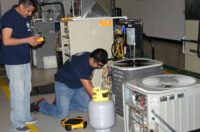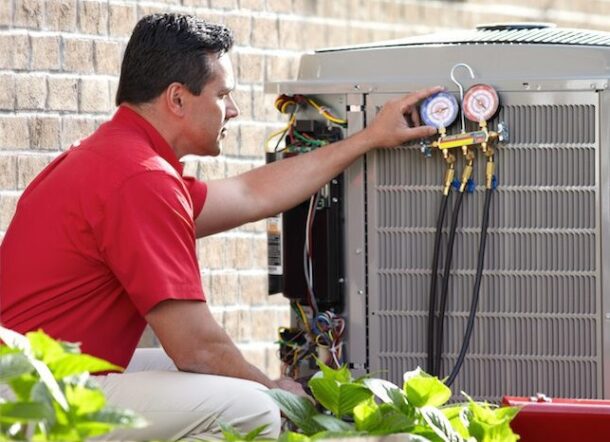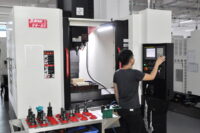Sustainability has become an essential concept that industries must follow as construction companies offer more eco-friendly designs that can help reduce carbon footprints without compromising convenience and functionality. Innovations have been introduced that outline the need to use greener approaches to construction in residential and commercial contexts, so it has become a must for builders Read more
Whats New

Sustainability has become an essential concept that industries must follow as construction companies offer more eco-friendly designs that can help reduce carbon footprints without compromising convenience and functionality. Innovations have been introduced that outline the need to use greener approaches to construction in residential and commercial contexts, so it has become a must for builders to double down on trends that improve sustainability.
For the past few years, these approaches have been incorporated into small and large-scale projects that focus mainly on reducing reliance on fossil fuels and enhancing ventilation. Such technology is expected to evolve further this year despite current climate policy decisions. Sure enough, the demand for eco-friendly construction will continue to thrive as more people seek more sustainable housing solutions. Here are a few key trends to watch for in the months to come.

Modular designs permeate the market
The highlight of sustainability in the construction sector is the use of modular technology. This entails the production of prefabricated materials that can be assembled on-site, allowing for faster completion times as well as greater space for modification on the part of the client.
While the concept has been around for more than a decade now, the market for prefabricated home designs has just picked up as people priced out of the current real estate market seek more affordable and convenient alternatives. Those who prioritize sustainability, can opt for modular designs that require lesser transport costs and produce less waste compared to traditional construction approaches.
Doubling down on sustainable landscaping
When it comes to a greener approach to home construction, builders should recognize the value brought by effective landscaping. Outdoor spaces serve as supplements to building interiors, offering a place for occupants to relax and unwind. More than that, sustainable landscaping can also help improve air quality and allow for the creation of microhabitats that can help keep the soil fertile and encourage plant growth on top of cooling down the surrounding environment during high heat.
With this in mind, people who are looking to build homes from the ground up should also think about incorporating sustainable technologies to the landscaping. These may include a rainwater intake that stores extra water to be used for irrigating the grass and flower beds. There’s also no discounting the benefits of landscape lighting which can be powered using solar panels.
Recyclable materials become more popular
With the need to reduce construction waste and address overproduction, builders can opt for construction plans that emphasize the use of recycled materials. Such a concept may seem controversial on the surface but there are now companies that manufacture new materials from old ones.
In addition to this, builders can also opt for parts made from recycled plastics and composite materials. Then again, more research is required to ensure that such products guarantee greater structural integrity at an affordable price.
Smart HVAC and plumbing systems
As construction trades embrace new technology emphasizing sustainability, there has been a pronounced need for HVAC and plumbing systems that consume less energy but generate just as much output as conventional systems. Currently, some buildings are already fitted with geothermal heat pumps that use a sophisticated system converting constant underground temperatures to heat or cool down building interiors. HVAC systems can also be connected to solar panels to dramatically decrease energy consumption and ensure optimal heating and cooling during extreme weather events.
In some homes, plumbing systems may include storage units for gray water which can be used for flushing toilets and irrigating outdoor spaces. What’s more, homeowners may also opt for a water heating system that’s entirely run by solar energy. This would come in handy for buildings located in areas where sunny weather is expected all-year round.
Endnote
Sustainable construction technologies remain just as relevant now. It’s only a matter for construction trades to keep up with the trends that matter the most.

The plumbing and HVAC industries are constantly adapting to new regulations designed to improve safety, efficiency, and environmental responsibility. As federal and state agencies introduce updated guidelines, contractors must stay informed to ensure compliance and avoid potential legal and financial consequences. Recent regulatory shifts focus on water quality, refrigerant use, and hazardous material disposal, all Read more
The plumbing and HVAC industries are constantly adapting to new regulations designed to improve safety, efficiency, and environmental responsibility. As federal and state agencies introduce updated guidelines, contractors must stay informed to ensure compliance and avoid potential legal and financial consequences.
Recent regulatory shifts focus on water quality, refrigerant use, and hazardous material disposal, all of which impact daily operations for these professionals.
Stricter Water Quality Standards and Their Impact
One of the most significant regulatory changes affecting plumbing contractors is the tightening of water quality standards. Concerns about contaminants in drinking water have led to increased scrutiny of plumbing materials, pipe coatings, and filtration systems. Municipalities are enforcing stricter guidelines to minimize exposure to harmful substances, requiring contractors to adjust their practices accordingly.
The Environmental Protection Agency (EPA) has also stated that the pipes, fittings, and other fixtures used by these contractors should be lead-free. As of September 2023, manufacturers and importers are also required to get lead-free certification. These regulations have become even more relevant in light of recent environmental lawsuits.
Lawsuits Influencing Stricter Regulations
Legal actions related to chemical contamination have drawn attention to substances that can leach into water supplies.
For example, the disposal of per and poly-fluoroalkyl substances (PFAS) into water bodies can bring these harmful chemicals into water supplies. Data shows that over 20% of the country’s population may be exposed to PFAS-contaminated water.
One example of how people are legally retaliating to exposure to these harmful substances can be seen in firefighting foam lawsuits. Through a firefighting foam lawsuit, many states are suing aqueous film-forming foam (AFFF) manufacturers for dumping these harmful substances in water.
As stated by TorHoerman Law, some PFAS chemicals in AFFF are known to be carcinogens. They can lead to testicular, kidney, liver, and other forms of cancer. Even firefighters who are constantly exposed to AFFF are filing lawsuits against manufacturers for not warning them about the potential health hazards.
Since many hazards like PFAS can leach into drinking water systems, there is growing pressure on regulatory agencies to refine water quality guidelines further. They now require more advanced filtration systems in both residential and commercial buildings.
For plumbing contractors, this means keeping up with evolving material standards and ensuring that any installation work meets the latest safety requirements. Clients, especially in commercial and industrial settings, may also demand upgraded plumbing systems that align with the newest recommendations.
Contractors who stay ahead of these changes will be better positioned to offer solutions that comply with emerging regulations.

New Refrigerant Regulations for HVAC Contractors
The push for environmentally friendly alternatives has led to major changes in refrigerant regulations. The phase-out of hydrofluorocarbons (HFCs) is one of the most impactful shifts in the HVAC industry. With governments setting limits on high-global-warming-potential (GWP) refrigerants, contractors must transition to alternative products that meet sustainability goals.
The state of California is already adopting these new guidelines. As stated by Fox59, EPA is enforcing a GWP limit of 750 for AC refrigerants. Therefore, R-410A, one of the most commonly used AC refrigerants, will have to be replaced because it has a GWP score of 2,088.
New refrigerants such as R-32 and R-454B are being introduced as replacements for older, less environmentally friendly options. While these alternatives reduce greenhouse gas emissions, they also require updated training and equipment to handle them safely.
Many HVAC professionals must obtain additional certifications to work with low-GWP refrigerants, as regulations now mandate specific handling and disposal procedures.
Compliance Challenges with Hazardous Material Disposal
Construction sites often generate hazardous waste, from lead-based pipes to outdated HVAC components containing harmful chemicals. Regulations governing the disposal of these materials are becoming more stringent, placing additional responsibility on contractors to ensure compliance.
Failing to follow proper disposal procedures can result in fines and liability issues. This makes it essential for businesses to establish clear protocols for handling hazardous waste. Contractors should also be aware of new state-level regulations that may go beyond federal guidelines.
Some states are implementing stricter rules on material disposal, requiring additional documentation and verification to confirm compliance. Those working in multiple states must be especially diligent in understanding the specific requirements of each jurisdiction to avoid penalties.
There are many Treatment Storage and Disposal Facilities (TSDFs) available country-wide for those looking to dispose of hazardous substances efficiently. TSDFs are also strictly regulated because they are responsible for managing and treating large volumes of waste. Thus, by connecting with TSDFs to manage hazardous wastes, plumbers and HVAC contractors can ensure they are safe from any regulatory scrutiny.
Frequently Asked Questions
How do new energy efficiency standards affect HVAC contractors?
Stricter performance requirements for HVAC systems are mandated by new energy efficiency laws. This affects contractors by raising the need for high-efficiency machinery, necessitating sophisticated testing techniques, and demanding appropriate system size. To ensure that installations meet the most recent efficiency requirements, contractors might need to complete extra training.
Are there any upcoming licensing or certification changes for plumbing and HVAC professionals?
Updated training on handling hazardous materials, water filtration systems, and refrigerants is one of the new license criteria implemented by several jurisdictions. Federal regulations are also changing to ensure contractors have the right certification to operate with new technology like low-GWP refrigerants and heat pumps.
How are lead and copper regulations changing for plumbing contractors?
Stricter lead and copper limitations in drinking water are being pushed by the Environmental Protection Agency (EPA), necessitating new testing and pipe replacement. As a result, plumbing contractors may experience a rise in demand for pipe replacement projects in both residential and commercial buildings. To fulfill this demand, they must be aware of the new compliance standards.
The Importance of Staying Ahead of Regulatory Changes
For plumbing and HVAC contractors who wish to stay competitive, staying on top of changing rules may be difficult. In addition to shielding companies from financial and legal risks, compliance fosters customer trust in companies that provide safe and ecologically conscious services.
Contractors may prepare for changes before they become required by investing in continuing education and attending industry conferences. As the sector develops, those who proactively modify their training initiatives and business procedures will have the best chance of success.

In recent years, CNC (Computer Numerical Control) machining has revolutionized manufacturing in several industries, including heating and stove building. Using CNC Stove Plans, professionals and hobbyists alike can create efficient and durable stoves with precision-cut components. Unlike traditional manufacturing methods, CNC machining ensures accuracy, reduces material waste, and improves production efficiency. CNC technology allows for Read more
In recent years, CNC (Computer Numerical Control) machining has revolutionized manufacturing in several industries, including heating and stove building. Using CNC Stove Plans, professionals and hobbyists alike can create efficient and durable stoves with precision-cut components. Unlike traditional manufacturing methods, CNC machining ensures accuracy, reduces material waste, and improves production efficiency.
CNC technology allows for customization, giving users the flexibility to adapt designs to specific heating needs or space constraints. Instead of relying on off-the-shelf furnace designs, manufacturers can create unique, high-performance models optimized for fuel efficiency and durability. This innovation has also contributed to the growing adoption of CNC in the HVAC industry, as professionals seek precise solutions for custom heating systems.
This article explores the process of designing, cutting, and assembling a furnace using CNC technology, from selecting the right DXF files to welding and finishing the final product. Whether you’re an HVAC professional, a metalworker, or a do-it-yourself enthusiast, this guide will help you use CNC to produce a high-quality stove.
How CNC Works in Stove Manufacturing
The process of CNC machining has opened up new possibilities in stove manufacturing, allowing for intricate and high-quality cuts that were once difficult to achieve manually. Traditional manufacturing methods often result in inconsistencies that lead to inefficiencies in heat distribution and fuel consumption. In contrast, CNC machines follow precise digital blueprints, ensuring that every component fits together perfectly.
Consider a scenario where a manufacturer needs to produce a high-efficiency wood-burning stove. With CNC, every panel, vent and heat exchanger can be cut with pinpoint accuracy, improving airflow dynamics and maximizing heat retention. This is especially beneficial for stoves designed for energy-conscious users or remote cabins where fuel efficiency is critical.
With the right CNC Stove Plans, professionals can efficiently produce high-quality stove components that meet industry standards while reducing material waste and production costs.
Materials and Tools for CNC Oven Fabrication
Before starting the CNC cutting process, it is essential to select the appropriate materials and tools. The choice of materials has a direct impact on the efficiency, durability and safety of the machine.
Recommended Materials:
- Mild Steel (14-10 gauge): Durable and heat resistant, commonly used for furnace body components.
- Stainless Steel: Corrosion resistant and suitable for high temperature applications.
- Cast Iron Components: Often used for stove doors and grates, adding mass for better heat retention.
- Fireproof Insulation: Increases stove efficiency by reducing heat loss and improving overall thermal regulation.
Tools and Equipment Required:
- CNC plasma/laser cutter: For precision cutting of sheet metal parts.
- CAD Software (AutoCAD, Fusion 360, SolidWorks):For designing and modifying DXF files.
- Angle grinder and welder: For finishing and assembling furnace components.
- Fasteners and Hinges: Required for stove doors and adjustable components.
- Heat-resistant paint or coating: To prevent rust and increase durability.
Using the right combination of materials and tools will ensure the furnace functions efficiently while maintaining structural integrity at high temperatures.
Where to Find or Create CNC Furnace Plans?
Finding the right CNC Oven Plans can be the difference between a successful project and a frustrating experience. Several sources are available:
- Open Source DXF Files: Many online communities share free DXF files for CNC stove projects, allowing users to modify and adapt designs to their specific needs.
- Custom CAD Designs:If you need a custom stove, you can use CAD software to design your own stove to meet your specific heating needs.
- Buy from the experts: Many websites sell professionally designed furnace plans tailored for CNC cutting, ensuring tested and optimized designs.
- Customize existing plans:Use CAD tools to modify existing plans to meet your specific needs, making adjustments based on material availability or design preferences.
Before using a DXF file, make sure it is compatible with your CNC machine and cutting method. Some designs may require modifications to accommodate specific cutting tools or material thicknesses.
Starting the cutting process: From DXF file to finished part
Once you have the CNC Oven Plans, executing the cutting process requires careful preparation. Unlike manual fabrication, CNC cutting requires precise calibration and setup to ensure optimal results.
Proper setup and calibration ensures accurate results and reduces post-processing. A poorly calibrated CNC machine can result in misaligned parts that require additional grinding and welding to correct. Taking the time to set up the machine correctly will ensure minimal waste and accurate cuts, making the assembly process much smoother.
Assemble the oven: Step-by-Step Guide
The assembly process is where the stove really takes shape. Unlike traditional manufacturing, CNC-cut parts fit together seamlessly, reducing the need for extensive modifications or welding corrections.
Each step in the assembly process plays a critical role in ensuring the stove functions efficiently and safely. Taking the time to properly align the panels prior to welding prevents heat retention and airflow issues, improving the overall performance of the stove.
Efficiency and testing: Ensuring the stove works properly
Once assembled, rigorous testing is necessary to confirm the functionality and efficiency of the stove. A well-designed CNC-cut stove should optimize combustion, reducing fuel consumption while maximizing heat output.
Adjustments, such as reinforcing weak welds or modifying air vents, can improve stove performance. Engineers often use thermal imaging to identify points of heat loss, allowing for further refinements before the design is finalized.
Conclusion
CNC machining has redefined stove manufacturing, offering precision, efficiency and scalability. Using CNC stove plans and DXF files, fabricators can create durable, cost-effective, and energy-efficient heating solutions tailored to specific needs.
With CNC technology, the furnace fabrication process is no longer limited to high-volume manufacturers. Independent metalworkers, HVAC professionals and DIY enthusiasts can all benefit from this advanced approach. Whether you are designing a high-efficiency wood stove for off-grid living or building a custom heater for a workshop, CNC machining offers the precision and flexibility needed to produce high-quality results.
By following the steps outlined in this guide, from selecting materials to assembling and testing your stove, you can ensure a reliable and efficient end product. For additional resources, consider exploring online CAD communities, purchasing pre-designed stove plans, or experimenting with custom CNC projects.
With the right tools and expertise, CNC stove manufacturing can become a valuable skill for both industrial applications and home heating solutions.

CNC (Computer Numerical Control) machine tools are automated devices used in manufacturing to cut, shape precisely, and drill materials. It can be used for cutting metal, plastic, wood, steel, and different kinds of tools. These machines operate based on programmed instructions, eliminating human error and ensuring high precision. Using advanced software and robotics, CNC tools Read more
CNC (Computer Numerical Control) machine tools are automated devices used in manufacturing to cut, shape precisely, and drill materials. It can be used for cutting metal, plastic, wood, steel, and different kinds of tools.
These machines operate based on programmed instructions, eliminating human error and ensuring high precision. Using advanced software and robotics, CNC tools achieve superior accuracy, enhance production efficiency, and reduce material wastage.
In this article, we will explore how CNC machine tools contribute to achieving exceptional accuracy in modern manufacturing.

High-Precision Cutting Tools for Superior Accuracy
Globe Newswire states that the increasing demand for precision engineering and the evolution of manufacturing sectors have increased the demand for high-precision cutting tools. These tools are used across various industries, such as automotive, aerospace, and construction.
The cutting tools market is dominated by 40% turning tools, 30% by milling tools, and 20% by drilling tools. Around 30% of the demand for these tools is in the automotive industry, followed by the aerospace industry with 15% of the total demand.
High-precision cutting tools are essential components of CNC machines, enabling superior accuracy in manufacturing. These tools, made from durable materials like carbide or diamond, ensure clean, precise cuts with minimal deviations.
Advanced features such as micro-grain coatings, specialized geometries, and adaptive speed control enhance cutting performance, reducing material waste and improving consistency. Additionally, computer-controlled positioning allows for intricate detailing, making them ideal for industries requiring tight tolerances, such as aerospace and medical device manufacturing.
What maintenance practices help keep cutting tools in optimal condition?
Regular maintenance practices such as proper cleaning, lubrication, and inspection help keep cutting tools in optimal condition. Sharpening or replacing dull tools, ensuring correct tool alignment, and monitoring cutting speeds prevent excessive wear and maintain precision. Using the right coolant and storing tools properly reduces corrosion and extends lifespan.
Computer-Controlled Operations for Minimizing Human Error
Computer-controlled metal-cutting machines provide high accuracy and significantly reduce human error by automating complex manufacturing processes.
According to Fortune Business Insights, metal cutting and metal forming are the segments with the highest market share in manufacturing. These segments are dominating the market due to the availability of automation and computer-controlled CNC machines. These CNC machines dominate 28% of the general machinery market.
They follow pre-programmed instructions with extreme precision, eliminating inconsistencies caused by manual handling. Advanced sensors and real-time monitoring ensure accurate tool positioning, speed adjustments, and error detection. Additionally, automated feedback systems make necessary corrections instantly, maintaining consistency across multiple production cycles.
By minimizing human intervention, CNC machines enhance accuracy, improve repeatability, and reduce material waste. All this makes them essential for industries where precision and reliability are critical, such as aerospace, medical, and automotive manufacturing.
Multi-Axis Machining for Complex Geometries
Multi-axis machining enables CNC machines to create intricate and complex geometries with exceptional precision. Unlike traditional systems, multi-axis machines—like 4-axis and 5-axis CNC machines—allow for movement in multiple directions, reducing the need for repositioning.
These machines are also used easily with precision on hard materials like tool steel. According to Fictiv, tool steel is a high-quality alloy designed for cutting tools, dies, and molds due to its exceptional wear resistance and toughness.
Tool steel is incredibly hard, making it challenging to machine intricate geometries with traditional methods. However, multi-axis machining simplifies this process by allowing precise tool movement along multiple planes.
These machines enable seamless contouring, deep cuts, and fine detailing, ensuring superior accuracy and efficiency in shaping complex tool steel components. These machines can be used on high-speed steel (HSS), carbon tool, and stainless tool steel, each suited for various industrial applications.
When should a manufacturer choose a 5-axis machine over a 3-axis one?
Choose a 5-axis CNC machine over a 3-axis one when producing complex parts with intricate geometries, undercuts, and tight tolerances from multiple angles. A 5-axis machine allows continuous movement in five directions, reducing setup time and improving accuracy. It is ideal for aerospace, medical, and automotive manufacturing, where high precision and efficiency are critical.
Advanced Measuring and Feedback Systems
Advanced measuring and feedback systems play a crucial role in enhancing the accuracy of CNC machining. These systems use sensors, laser scanners, and touch probes to monitor tool positioning, cutting depth, and material deviations in real-time.
Automated feedback mechanisms detect errors instantly and adjust parameters to maintain precision and dimensional tolerance. This technology reduces defects, improves consistency, and ensures tight tolerances in complex manufacturing processes.
As per McGill Engineering Design, dimensional tolerance signifies an allowable orientation or positional deviation of a feature in a product. It can be in the design space, like angle, length, or diameter. Maximum manufactured parts must be within the specified tolerance limits. A general dimensional tolerance can be as much as ± .002″.
Industries like aerospace, medical, and automotive rely on these systems to achieve high-quality standards, minimize waste, and enhance overall production efficiency with superior accuracy.
How do touch probes and laser measuring tools enhance precision?
Touch probes and laser measuring tools enhance precision by providing real-time data on workpiece dimensions, tool positioning, and surface deviations. Touch probes detect exact coordinates, ensuring accurate alignment and reducing setup errors, while laser measuring tools scan surfaces with high-speed, non-contact precision.
Rigid Machine Structures and Vibration Control
According to MDPI, mechanical vibrations are a major problem of manufacturing tools. CNC machines are highly prone to vibrations that impact their quality, product life, and overall productivity. In extreme conditions, chattering is seen, which gradually reduces the tool’s life. Therefore, rigid machine structures are essential for maintaining precision in CNC machining and effective vibration control.
A robust frame from high-strength materials like cast iron or granite minimizes deflection and absorbs cutting forces, ensuring stability. Advanced damping systems, including passive and active vibration control, reduce unwanted oscillations that can impact accuracy.
By stabilizing the machine during high-speed operations, these features prevent tool chatter, improve surface finish, and extend tool life. This combination of rigidity and vibration control is crucial for industries requiring tight tolerances, such as aerospace and medical manufacturing.
Adaptive and Smart Tooling Technologies
Adaptive and smart tools use embedded sensors and AI-driven software to monitor cutting forces, temperature, and tool wear, optimizing performance for maximum precision. Adaptive tooling reduces manual intervention, minimizes tool breakage, and extends tool life by making instant adjustments based on material properties and machining conditions.
Industries like aerospace, automotive, and medical manufacturing benefit from these innovations. They improve efficiency, ensure consistent quality, and enhance the overall accuracy of complex machining processes.
Embracing Precision for Future Manufacturing
Incorporating advanced technologies like CNC machine tools, multi-axis machining, and adaptive tooling significantly elevates precision in manufacturing. By minimizing human error, enhancing accuracy, and optimizing efficiency, these innovations will meet the demanding standards of modern industries. They will also pave the way for more advanced, reliable, and cost-effective manufacturing solutions in the future.

If you’re looking for ways to advertise your business then you’re probably looking into digital marketing and this is a good move for just about any business these days. However, before digital marketing there was traditional marketing and this work wonders to growimgy businesses and bring in conversions. Many people have abandoned this method but Read more
If you’re looking for ways to advertise your business then you’re probably looking into digital marketing and this is a good move for just about any business these days. However, before digital marketing there was traditional marketing and this work wonders to growimgy businesses and bring in conversions.
Many people have abandoned this method but it still works today. Here are some of the main reasons why you should delve into digital marketing.
Expand Brand Awareness
One of the main advantages of traditional advertising is that it has the ability to enhance brand awareness in a big way. Television commercials, billboards, and newspaper ads will expose your brand to a broad audience.
When an audience is consistently exposed to your brand it is going to reinforce brand recognition and establish your business as a trusted entity in the marketplace. This gives you a chance to stay on consumers minds and stand out.

Reaching a Diverse Audience
Traditional advertising is going to allow your business to target a diverse audience. This includes those who may not be active on digital platforms.
For example, if you do radio ads you’re going to reach commuters who would love to listen to local stations during their daily drives. Advertisements in newspapers and magazines are also reaching a unique audience there as well.
Additionally, even if you do television commercials it provides an opportunity to showcase your products and services for a very broad demographic. This ensures that your business does not miss any potential customers who may not be active on social media right now.
Building Credibility and Trust
There’s no doubt that consumers often view traditional advertising as being more incredible. Commercials are often associated with well established brands.
They have high production standards and this makes them seem trustworthy. When your business begins to invest in traditional advertising, it demonstrates stability and commitment.
This can help to build the confidence of any potential customers you may have. Furthermore, traditional media outlets have strict editorial guidelines to ensure that only credible businesses and advertisements are featured there.
Enhancing Local Market Penetration
Radio stations, local newspapers and billboards are going to allow you to reach a specific geographic area. Consider sponsoring local community events, and placing ads in local publications.
This is going to help your business to establish a strong presence in your local market. Traditional advertising is going to foster a sense of familiarity and make your customers more likely to engage with your brand over time.
Offering Tangible Experience
Traditional advertising provides your target audience with a tangible experience. Print ads, brochures, direct mail, flyers and quality leaflets are going to create that physical connection with your consumers that makes you a lot more memorable.
When you have high quality printed material to advertise your business it allows you to showcase your products and services in a way that’s very visually appealing. An informative format is going to encourage your potential customers to take action a lot more quickly.

Creating a Lasting Impression
One of the great things about traditional advertising is that it is known for its ability to create some strong lasting impressions. Think about all those jingles you may remember from radio ads.
Television commercials have great songs that are often memorable as well. When this is the case along with striking visuals, it is going to stick in a customers mind for a very long time.
Even a well crafted print ad that is seen in a widely read magazine can stay in circulation for several weeks and months. This will continue to influence customers along the way.
Complementing Digital Marketing
Perhaps the best use of digital marketing strategies is to combine it with traditional advertising as well. When you have a well-rounded marketing approach it is going to allow you to reach more people.
When you start weaving traditional methods into your campaigns, your brand gets exposure far and wide and on multiple channels. Digital marketing is not something that should be separated from traditional marketing but instead they should be used together to enhance the reach you have with your current customers and potential ones as well.
Leveraging Word of Mouth Marketing
Traditional advertising is a great way to generate word of mouth advertising for your business. It is one of the most powerful forms of promotion. As mentioned before when you have a catchy jingle or maybe a catchy billboard it will spark a lot of conversation.
Consumers are going to talk to each other about what they have seen and this is going to increase your brand’s visibility. When a customer starts discussing a business based on traditional advertising it is going to create some organic referrals to the business and build credibility as well.
Offering Measurable Results
Traditional advertising can give you the opportunity to measure your accomplishments effectively. You can track foot traffic, sales and customer inquiries that have been generated from specific advertisements.
For example, you can put promotional codes in print ads or even giving exclusive offers that are advertised only on the radio.
This can help you streamline your campaign. When people start interacting with your business you will know exactly which form of advertising works best.
When you start analyzing customer responses, your business can optimize traditional advertising strategies so that you see better results.
Getting your business out there can be challenging but if you are willing to take it on nothing can stop you. With traditional advertising offering so much value, when you learn how to use it effectively you’re going to see your brand skyrocket. This is especially true if you combine traditional forms of advertising with digital marketing as well.
There’s a lot at stake and you want to make sure that you take the best avenue possible to get your business out there and in front of the right people. This is the only way that you are going to secure some good conversions and get your business to make a name for itself.
